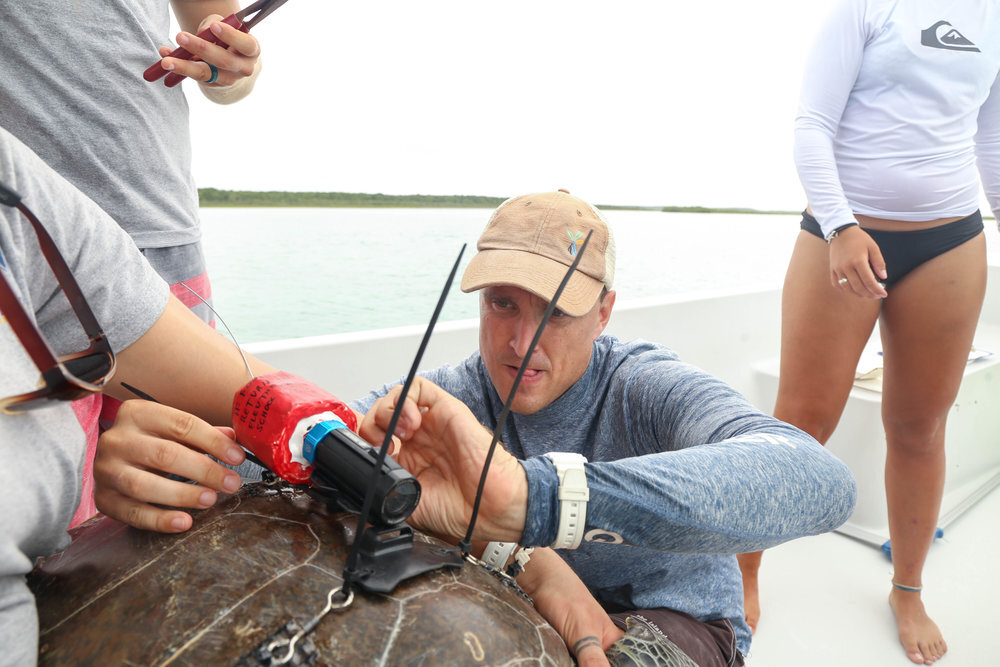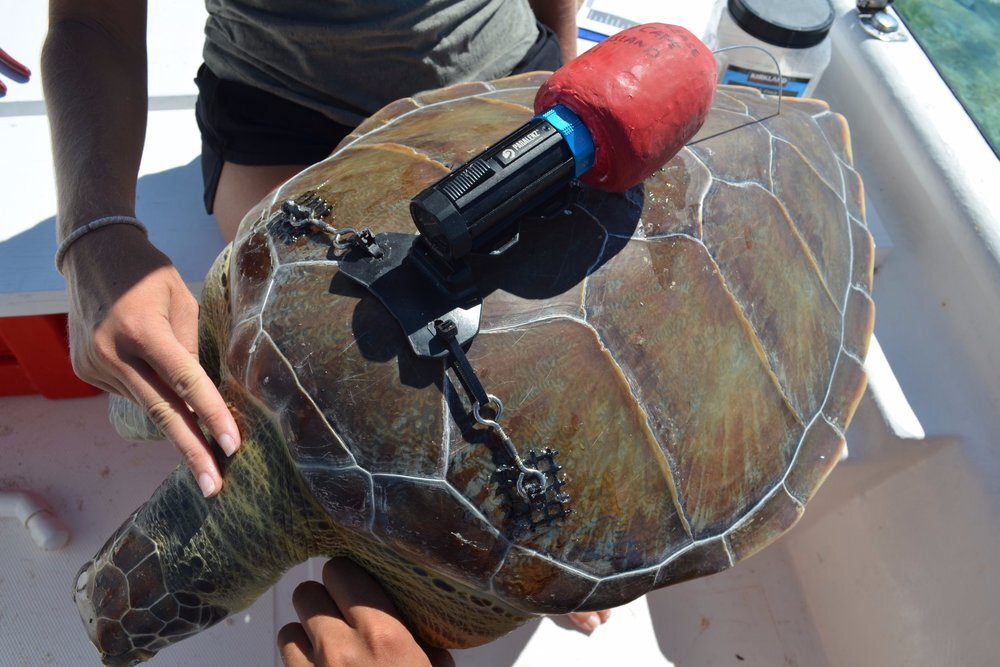Have you ever wondered what it would be like to swim through the ocean like a sea turtle? We certainly have, and the idea of seeing the world through the eyes of a sea turtle inspired us to start the ‘TurtleCam’ project.
The TurtleCam is made from a camera, a small radio transmitter, and a couple of recycled foam buoys. Each of these items are glued together to create a device that can be mounted directly on the shell of a free-swimming sea turtle. These devices, or TurtleCams, are fastened to the turtle’s carapace using corrodible links that detach within a few hours allowing us to recover it and the footage it contains. These TurtleCams are providing us with a first-person (or should it be first-turtle?) perspective of how sea turtles see the world around them.
Animal-borne cameras have been utilized by scientists and film-makers for many years to reveal the secret lives of wildlife. While this footage never fails to captivate an audience, perhaps the most exciting videos have come from marine animals. This is because most marine animals spend the majority of their lives far beneath the waves and out of sight to humans, meaning that even their most typical behaviors can be a mystery to us. It is therefore of little surprise then that scientists have excitedly deployed these cameras onto an ever-increasing range of marine animals, including whales, sharks, crocodiles, and sea birds. We are now adding to this list by deploying animal-borne cameras, for the very first-time, onto the juvenile green sea turtles of The Bahamas.
Perhaps the most interesting discovery that we have made so far is that juvenile sea turtles appear to be extremely social. Contrary to most prior conceptions of sea turtles being solitary animals, juvenile sea turtles spend large amounts of time interacting with each other. Sometimes this can involve short chases, flipper biting, or even a behavior that can be best described as nuzzling. We have also been using the footage to help us determine in which habitats turtles spend the majority of their time. By identifying such critical habitats for sea turtles, we can begin to develop conservation management plans that ensure that these habitats remain free from threats, such as boat traffic or entanglement in fishing gear.
The clear value of this footage from a scientist’s perspective is furthermore complemented by the ability of these videos to capture people’s imaginations. We truly believe that these videos, which allow you pretend for a minute that you are like one of these turtles swimming through the ocean, can help inspire countless people to live more turtle-friendly lives; and this can be easily achieved regardless of where you live. Indeed, each year countless sea turtles are accidentally caught and killed by fisheries that are hunting for commercial species, such as tuna or swordfish. Those that are not caught by fisheries often suffer a similar fate, after choking on plastic bags and other plastic waste that is ingested after confusing it for a jellyfish prey.
These issues of unsustainable fisheries and plastic in the ocean are global problems, and we all have a responsibility to help against these. By supporting fisheries that fish in a smarter and less wasteful manner or reducing our use of single-use plastics, you too can help create a more turtle-friendly world.
We hope that you are as inspired by the TurtleCam footage as we are and we can only imagine what fantastic discoveries this project will uncover in the future!


